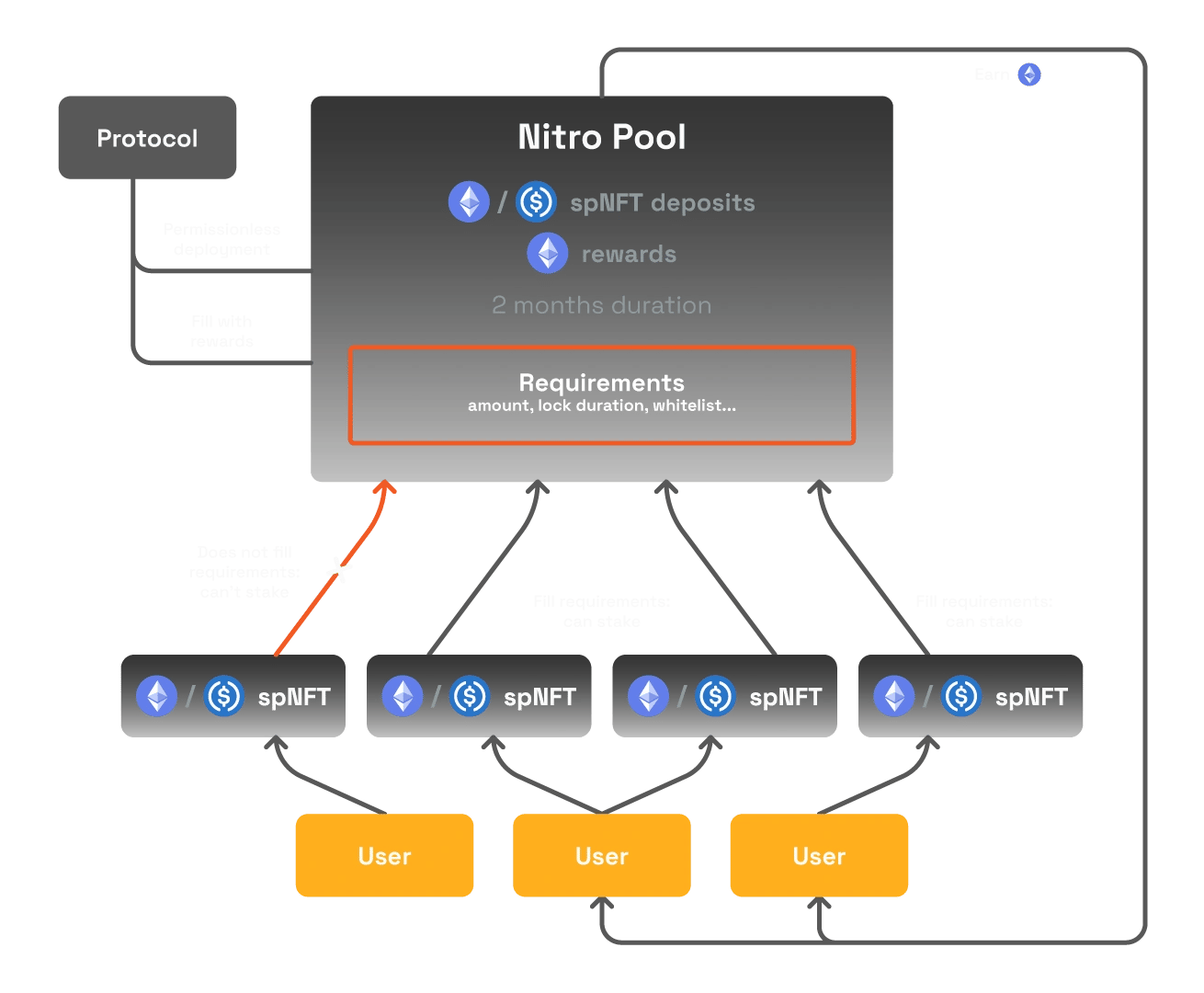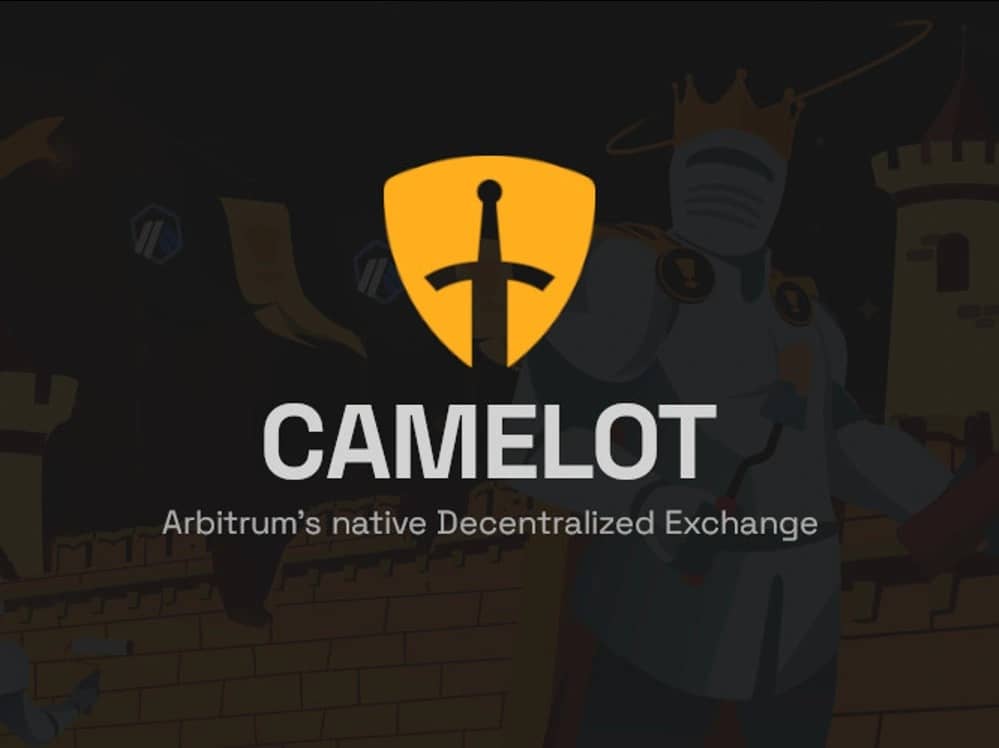위키 구독하기
Share wiki
Bookmark
Camelot DEX
Camelot DEX
Camelot(캐멀롯)은 Arbitrum 네트워크 기반의 탈중앙화 거래소 (DEX)입니다. Camelot DEX는 2022년 12월에 출시되었습니다. 거래소의 네이티브 토큰은 $GRAIL입니다. [1][10]
개요
Camelot은 Arbitrum 기반의 생태계 및 커뮤니티 중심의 탈중앙화 거래소입니다. 2022년 11월에 개발되었으며, 2022년 11월 29일에 공개 토큰 판매를 시작했습니다. "Camelot"이라는 이름은 아서왕의 캐멀롯 궁전에서 따온 것으로, 원탁의 개념을 상징합니다. 이러한 맥락에서 Camelot을 사용하여 유동성 풀을 생성하는 사용자와 프로젝트는 원탁의 훌륭한 기사들과 유사하게 "기사"라고 불립니다. [2]
원탁에 참여하는 프로토콜에는 D-Squared, Byte Masons, Liquity, Hop Protocol, Tarot Protocol, Lexer Protocol, Factor, Vela Exchange, JustBet, Bond Protocol, Redacted Cartel, Perpy, Relay Chain, Plutus DAO, Lyra DAO, Pendle, Thales, Spool DAO 및 Silo가 포함됩니다. [12]
Camelot의 구조는 개발자와 사용자가 유동성을 조정할 수 있는 사용자 지정 가능한 프로토콜입니다. 또한 Nitro Pools 및 spNFT(래핑된 유동성 토큰)와 같은 기능을 제공하여 제공자가 유동성에 대한 잠금 기간을 생성하고 수익에 대한 배율을 얻기 위해 Camelot의 플러그인 기능을 활용할 수 있도록 합니다. [2]
서비스 및 기능
자동화 시장 조성자 (AMM)
AMM은 Camelot 생태계의 핵심 시스템입니다. 개발 방향은 유연성과 사용자 지정을 위한 이중 유동성, 동적 방향 수수료, 생태계에 참여하려는 파트너 및 프로젝트를 직접적으로 대상으로 하는 추천 등의 방법을 따릅니다. [3]
스테이킹된 포지션 (spNFT)
spNFT(비대체 스테이킹된 포지션)를 통해 각 Camelot 유동성 풀에는 사용자가 유동성 풀 토큰을 래핑하여 생성할 수 있는 자체 스테이킹 포지션(spNFT)이 있습니다. spNFT는 사용자에 의해 예금 영수증으로 취급되며 일반 유동성 제공자에 비해 고급 기능을 갖추고 있습니다. 고유 ID를 가지며, 토큰 수, 제공된 토큰의 가치와 같은 사용자 포지션의 전체 매개변수를 가지고 있으며, 연간 수익률 (APY)와 배율 포인트가 있는 잠금 시간을 갖습니다. [4]
스테이킹된 포지션은 유동성 제공자 토큰에 래핑 계층으로 작용하여 다양한 사용자 지정 전략을 통해 유연한 유동성 제공을 가능하게 합니다. [2][4]
수익 농사
Camelot의 이중 유동성 메커니즘은 유동성을 제공하는 사용자에게 수익 농사를 보상합니다. 또한 80/20 비율로 $GRAIL 및 xGRAIL 보상을 받는 인센티브 프로그램에 참여할 수 있습니다. [5]
거래소는 수익을 창출하는 스테이킹된 포지션에서 수익을 높이는 두 가지 주요 방법을 제공합니다. 사용자가 자산을 특정 기간 동안 잠가 토큰에 대한 보상을 받는 잠금을 통해서, 그리고 사용자가 xGRAIL을 스테이킹 포지션(spNFT)에 사용하여 이익을 얻을 수 있는 YieldBooster 플러그인을 통해서입니다. [5]
Nitro Pools
Nitro Pools는 Camelot의 파트너 프로젝트 및 사용자에게 유동성을 제공하기 위해 생성됩니다. 유동성 제공에 대한 보상 외에도, 프로젝트는 Nitro Pool에서 ETH로 새로운 보상 계층을 생성하여 프로젝트 내부의 유동성을 장려합니다. 사용자는 스테이킹 후 PLS 배출, xGRAIL 및 GRAIL을 얻습니다. [6]
두 가지 유형의 Nitro Pools는 Camelot에서 생성한 공식 Nitro Pools와 누구나 생성할 수 있는 커뮤니티 Nitro Pools가 있습니다. [6]

xGRAIL 플러그인
xGRAIL 플러그인은 xGRAIL 계약에 연결된 계약입니다. 일부 플러그인은 Camelot 팀에서 직접 만든 기본 플러그인(배당금, 수익 부스터, 런치패드 등)이지만, 다른 플러그인은 생태계의 누구든지 자유롭게 통합할 수 있습니다. [8]
잘못된 내용이 있나요?
